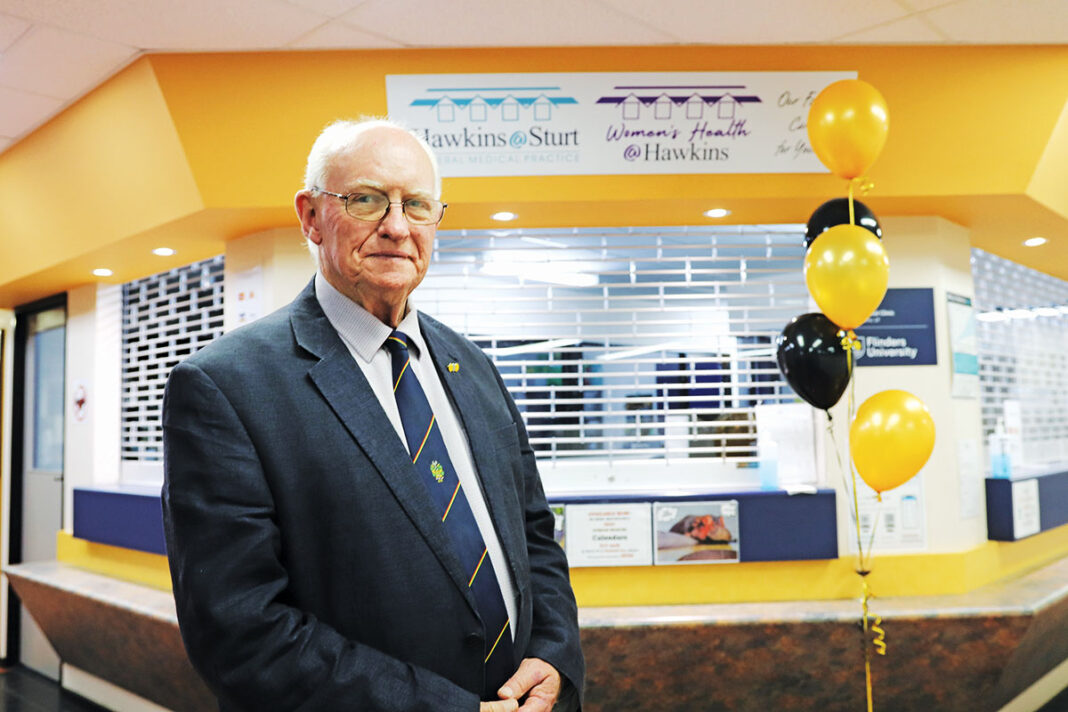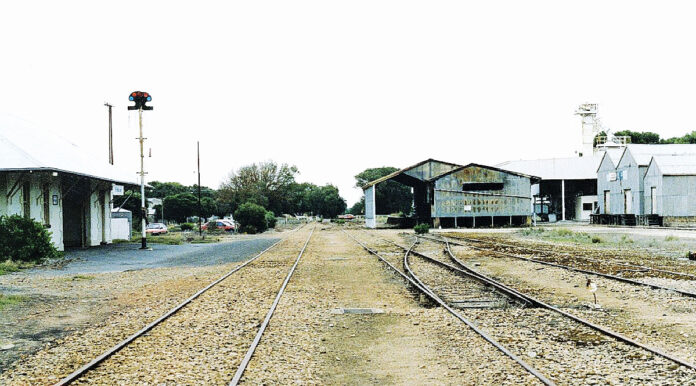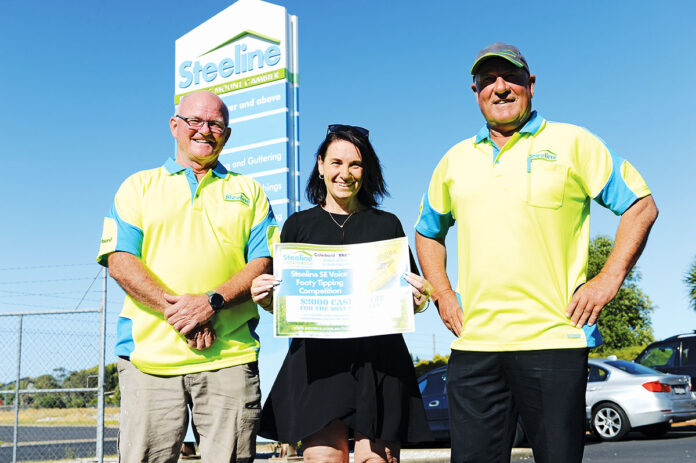AMount Gambier general practitioner has retired after five decades of working at Hawkins Medical Clinic.
Peter Charlton, or Doctor Charlton as he is fondly known by many, has cared for generations of families over his longstanding career at the clinic.
Dr Charlton said he had enjoyed the interaction with patients, being involved with the beginning of life, end of life and everything in between and assisting people through this process.
“To be involved with somebody when they are born and then see them as children with their sore ears and sore throats and then to see them when they start developing through puberty and teenage years and helping them through that era of life and seeing them when they are developing their own families, it is a great privilege to be involved in that way with a person,” he said.
“There are quite a number of families that I have cared for five generations of and been involved with the births of three generations of the family.
“It was pretty exciting, the first second generation baby that I was involved with the birth of, there are quite a number of those around, but then there have been a few third generation babies, and what a privilege it is to be able to be involved with people at that special part of their lives through those generations.”
Dr Charlton reflected on his time as a student at Pulteney Grammar School when he was considering a career in pharmacy.
“I was influenced by a teacher at school who said ‘why do not you aim to be a doctor? You will probably make a good doctor’,” he said.
Dr Charlton studied at the University of Adelaide and after completing his training, he did a stint in Papua New Guinea before deciding General Practice was the path he wanted to take.
“After working in New Guinea, I thought that metropolitan general practice was not going to be professionally stimulating enough for me, so I started looking at rural practices,” he said.
“I wrote to Port Lincoln, I wrote to Stirling, which was considered a rural practice in that era, I wrote to Millicent Clinic, I wrote to Ferrers Clinic.”
While in Guinea, Mr Charlton received a knock on the door from a neurosurgeon whose brother was moving out of Hawkins Clinic.
“He said, ‘you have to go to Hawkins Clinic, they really need someone like you’, so that convinced me that Hawkins Clinic was the place to go to,” he said.
Dr Charlton was the eighth doctor at Hawkins and when began his job, the clinic was a combination of general practitioners and specialists, including a surgeon, orthopaedic surgeon, ear, nose and throat surgeon and a physician.
“One of the things that really established my practice with a cohort of people was the fact that no doctor in Hawkins Clinic at that time would prescribe the oral contraceptive pill for anyone who was not married or about to be married,” he said.
“The girls of the town thought this new 30-year-old doctor might be a little bit more understanding of their requirements and helping them with their contraceptive needs.”
Dr Charlton said the most significant change in Mount Gambier was when the General Practitioners were disallowed to work in the hospital.
“That was quite traumatic because it prevented us from offering the continuity of care for people in and out of the hospital,” he said.
“We still were allowed to treat private patients in the hospital, but we were not allowed to treat any public patients in the hospital.”
Dr Charlton experienced the clinic making the transition from paper records to computer.
“Initially when I arrived, the appointment sheets were big, long sheets of paper, with a column for each doctor, times and written down appointments, and all the doctors’ records were kept on eight inches by five inches cards, all hand-written,” Dr Charlton said.
“Then we moved to A4 written notes, that transition was a major change.
“Tribute to Doctor Brown, who was previously a partner at Hawkin’s Clinic probably for 47 years, who spent a lot of time with some help from other members of staff going through the old records summarising the past history of these people so that we could transition to A4 notes.
“That facilitated our transition to computer records, which happened around the year 2000.”
Dr Charlton said another major change since he first arrived was the clinic on-call system.
“There was a tie line to each doctor’s house from the clinic and so this dial in the clinic would be switched around to the doctor that was on-call for that night, so all the incoming calls went to that house,” he said.
Dr Charlton’s wife, Sue Charlton, said the wives had to be home to answer the phone when their husband was on duty.
“We had to be home by 5 o’clock to take the phone and then you would have to keep a list of who was coming for the evening clinic and the wives usually went in to help with the evening clinic,” she said.
“The doctors did the evening clinic and then they went off to the hospital to do whatever they had to do at the hospital, and we came home.”
Dr Charlton’s role has been a family affair over the years, with his three children having helped at the clinic at some stage or another.
“As they got older, they did my responsibilities at the clinic, and they went in to help their dad do the evening consult as a receptionist-type role,” Ms Charlton said.
Because of the extremely busy nature of Dr Charlton’s role, balancing family and working life could be challenging.
“At one stage, Sue made an appointment to introduce me to my children, in case I had forgotten their names,” Dr Charlton said.
Ms Charlton tried to have the caesarean of her third child, Lucy, on a certain day in Adelaide, with Dr Charlton booking time off work to be there, however she went into labour 10 days early and he could not get time off work.
“It was 10 days before I saw my third child, because I was on call and on duty here before I actually saw the baby,” Dr Charlton said.
Ms Charlton said her husband had been busy delivering around 300 babies a year, so she booked an appointment at Hawkins to take the children to ‘meet’ their father.
“He got quite a surprise when he came out to get his next patient and it was me, and I said, ‘I have just brought the children to introduce you, you probably remember these two, but they have grown a bit since you last saw them, and this is Lucy, I do not think you have even met her,’” she said.
Following his retirement, Dr Charlton received many farewell cards from patients, many who had not seen another doctor for 49 years.
“I have been quite overwhelmed with the number of cards and letters of appreciation that I have got,” he said.
“Lots of cards and gifts thanking me for the service, which was unexpected but humbling and welcomed.”
A farewell party was held at Hawkins for Dr Charlton last week, attended by Hawkins staff and his loved ones.
“It was a good opportunity to thank the staff for all the support they have given me over the 50 years I have worked at Hawkins clinic,” he
said.
“I feel grateful and privileged that I have been able to work for that period of time in hopefully a competent manner.”




